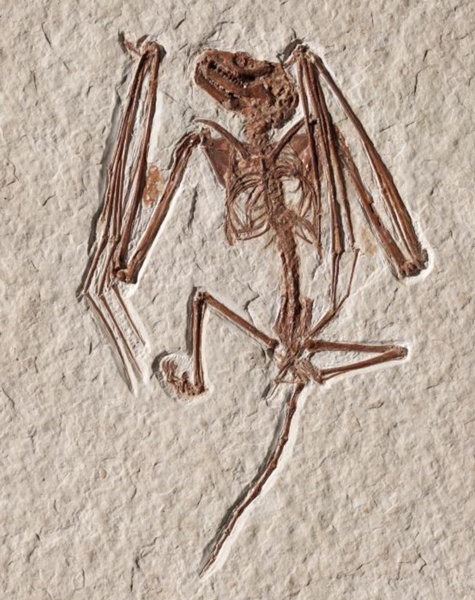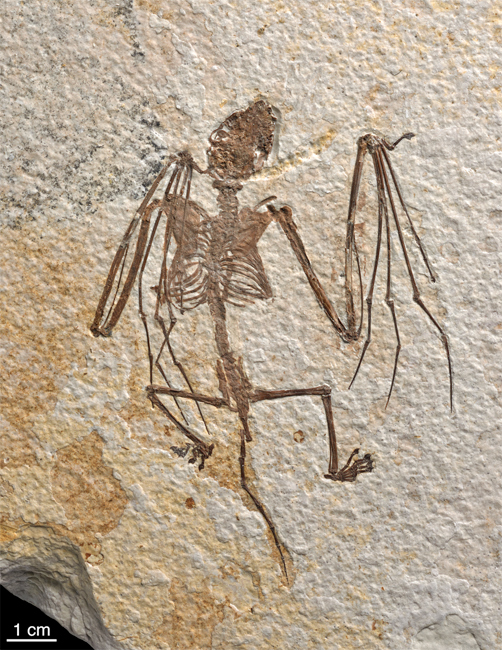Oldest Bat Skeletons Ever Found
Scientists have described a new species of prehistoric bat based on the oldest bat fossils ever discovered. The new bat species has been named Icaronycteris gunnelli and it flew in the skies above Wyoming approximately 52 million years ago.
The study describing these remarkable fossil finds was published earlier this summer in the academic journal PLOS One.

Icaronycteris gunnelli
The authors at the American Museum of Natural History (New York) in collaboration with the Naturalis Biodiversity Centre in the Netherlands, hypothesise that bats diversified rapidly during the early Cenozoic.
There are more than 1,460 extant species of bats found in nearly every part of the world, with the exception of the polar regions and a few isolated islands. These fossils from the Green River Formation of Wyoming suggest that these mammals were geographically widespread by the early Eocene.
Bat fossils had been found in these strata over the last sixty years or so. However, they were all thought to represent the same two taxa. The two fossil bat taxa that have been described previously from the Green River Formation are Icaronycteris index (Jepsen, 1966) and Onychonycteris finneyi (Simmons et al, 2008).

Detailed Study
Scientists from the Naturalis Biodiversity Center started looking closely at Icaronycteris index by collecting measurements and other data from museum specimens. This more detailed study they suspected, would lead to new taxa being identified.
Although there are fossil bat teeth from Asia that are slightly older, the two I. gunnelli fossils represent the oldest bat skeletons ever found.
Arvid Aase, park manager and curator at the Fossil Butte National Monument, in Wyoming commented;
“The Fossil Lake deposits of the Green River Formation are simply amazing because the conditions that created the paper-thin limestone layers also preserved nearly everything that settled to the lake’s bottom. One of these bat specimens was found lower in the section than all other bats, making this species older than any of the other bat species recovered from this deposit.”
While the I. gunnelli skeletons are the oldest bat fossils from this site, they are not the most primitive, supporting the idea that Green River bats evolved separately from other Eocene bats around the world.
Everything Dinosaur acknowledges the assistance of a media release from the American Museum of Natural History in the compilation of this article.
The scientific paper: “The oldest known bat skeletons and their implications for Eocene chiropteran diversification” by Tim B. Rietbergen, Lars W. van den Hoek Ostende, Arvid Aase, Matthew F. Jones, Edward D. Medeiros and Nancy B. Simmons published in PLOS One.
Visit the Everything Dinosaur website: Everything Dinosaur.

